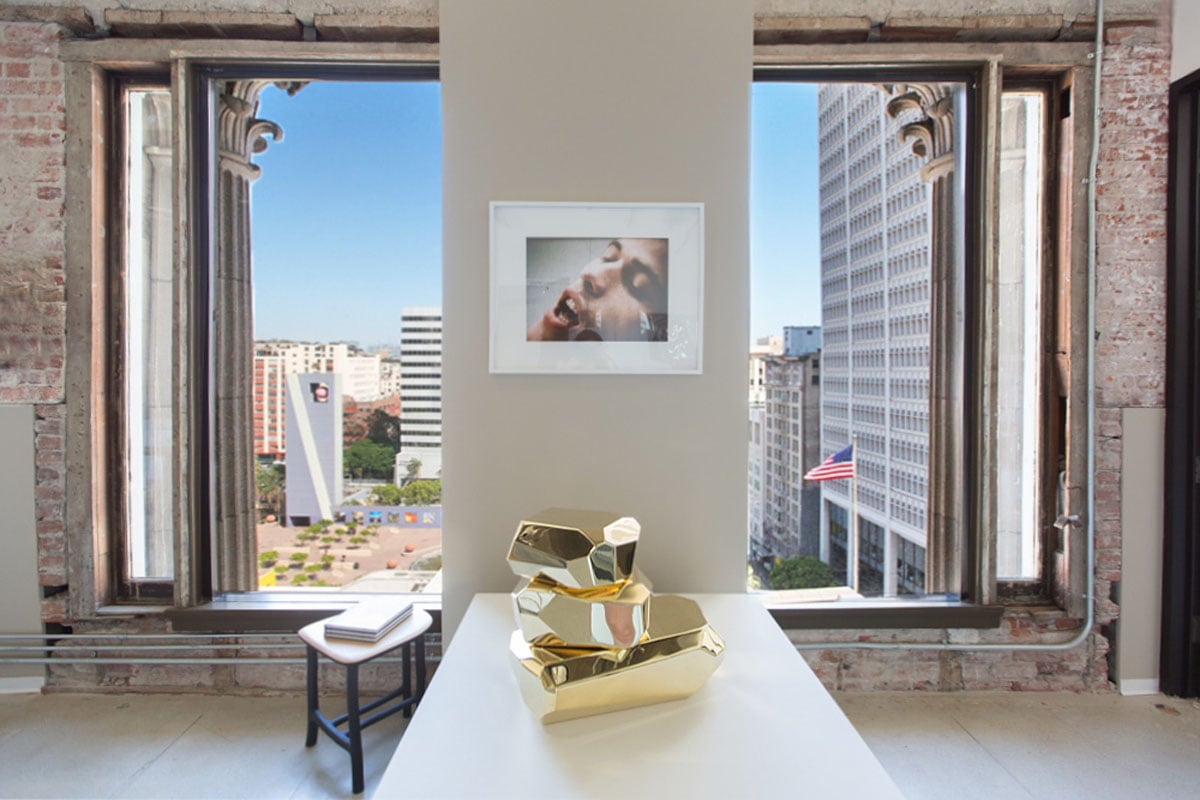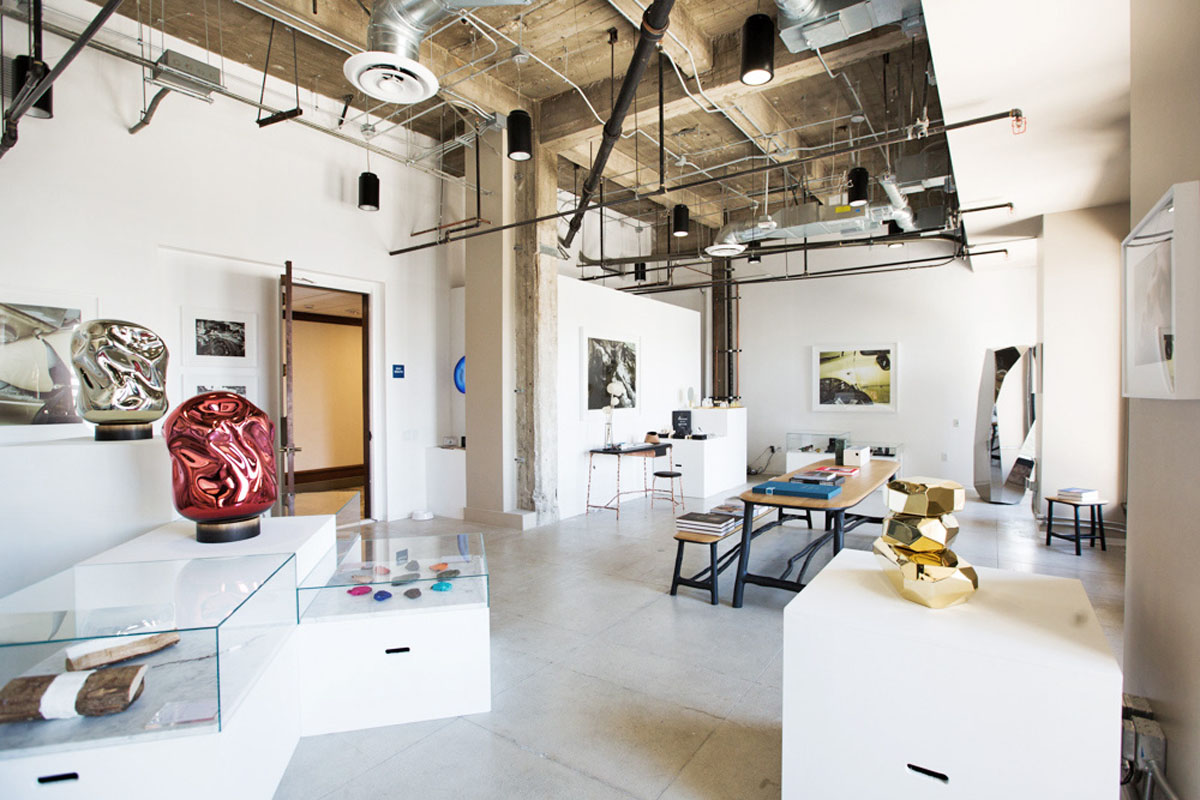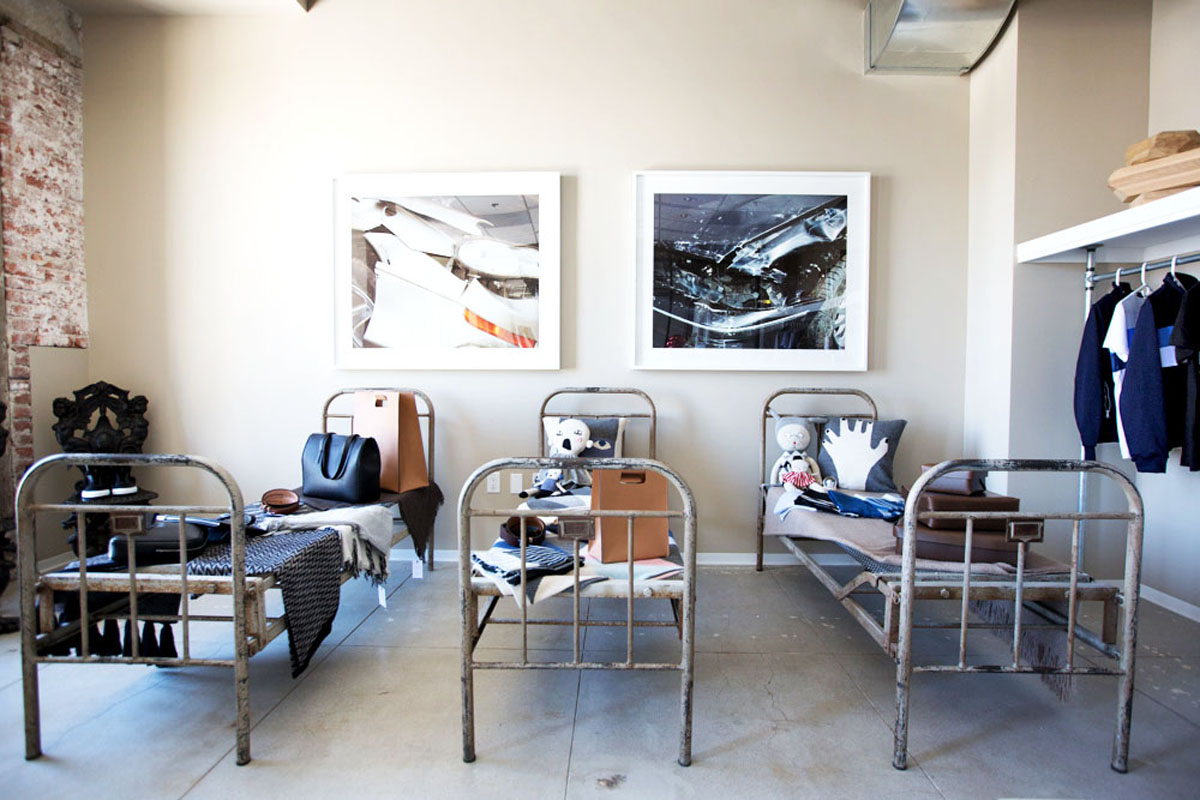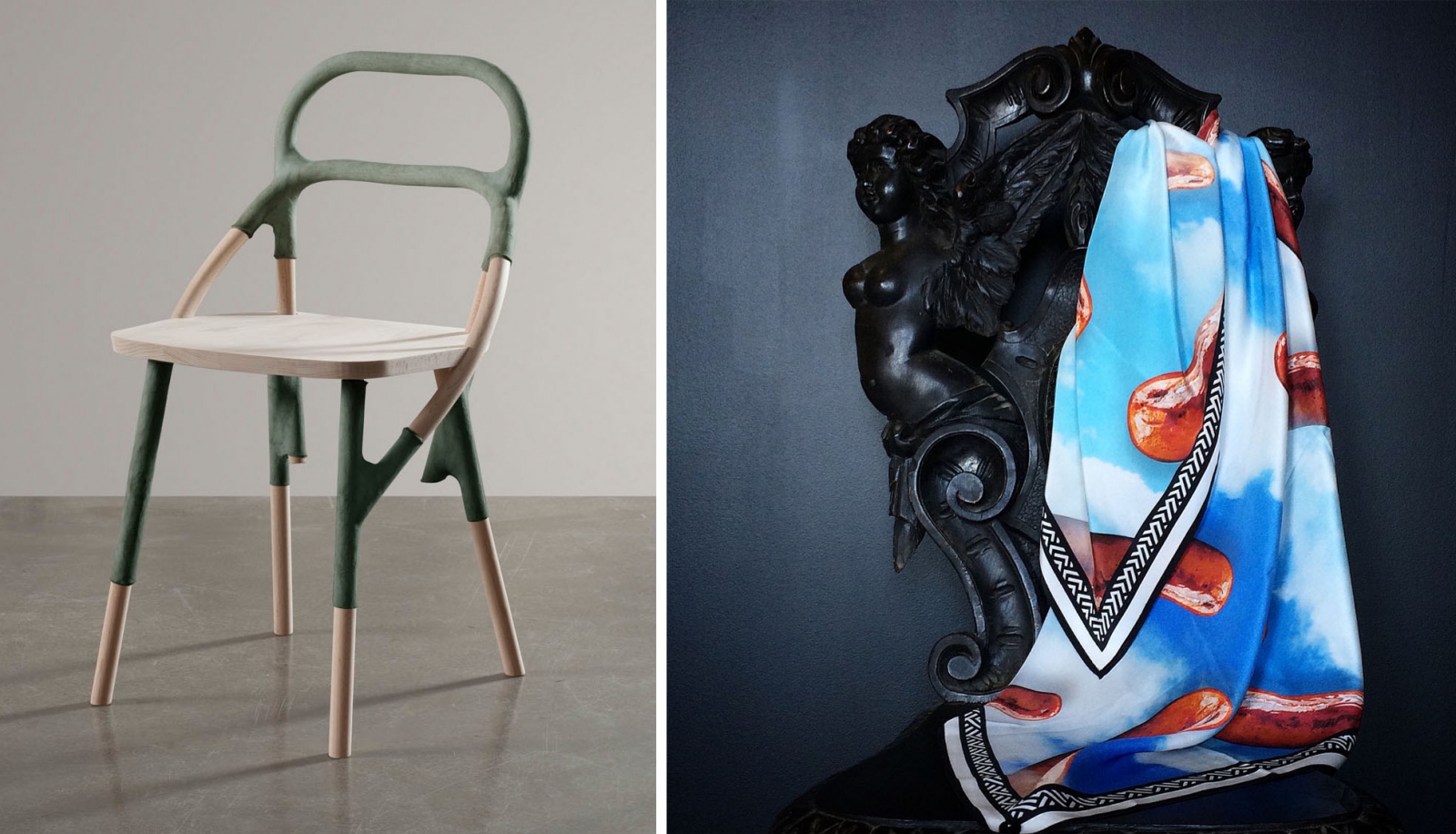
February 11, 2015
Please Do Not Enter Is L.A.’s Best Design “Secret”
Please Do Not Enter isn’t a secret, but it isn’t exactly well-known either. To founders Nicolas Libert and Emmanuel Renoird, both originally from Paris, this means they are doing something right.

Please Do Not Enter occupies the 12th floor of part of the PacMutual Building (formerly the Pacific Mutual Building). Pictured: Arik Levy’s sculpture MicroRocks (Brass) bathes in the natural light of the expansive windows.
Courtesy Elizabeth Daniels Photography
Eight months ago, the curatorial duo relocated to Los Angeles to be part of the energy of the L.A. art scene. This past June, defying all business logic, they opened their by-appointment-only gallery slash shop on the top floor of a recently renovated Beaux Arts office building downtown. “We wanted to turn the whole white cube gallery thing upside down,” says Libert. “People thought we were crazy to be downtown, and even crazier to be on the top floor. But here we feel like we are in the middle of everything. For us, Los Angeles is the new world.”
At Please Do Not Enter there is the sense that its address in physical space is secondary—that it could exist anywhere. Most of the products offered come from studios and small factories in Europe.
“There are no rules about being local,” says Libert. “We come from Europe, so, naturally, many of our things come from there.” In fact, beyond the physical space of Please Do Not Enter exists an operation of roving art installations, performances, and events constantly popping up in various locations around town and back in Paris.

Libert and Renoird employ all manner of objects—including hospital beds (below), marble slabs, and a wooden picnic table and benches—to display their various curios.
In the mostly polished, concrete-floor space in L.A., objects ranging from the curious (purses made from actual toad skins, retaining the toad shape) to the mundane (minimalist Japanese notepads) are neatly displayed on tables, shelves—and, yes, a few white cubes—without fuss or fanfare. Prices range from $8 (a set of faux business cards with psychological exhortations) to $190,000 (a large-scale faceted metal sculpture by France-based artist Arik Levy).
“The best part is when people come expecting to find one thing and then discover something totally different that they weren’t even thinking about,” says Libert. One of the goals, he adds, is that a personal connection can be formed between the end user and the artist-craftsman through customization. “We want people to feel like they can approach the designers. This is a different way of doing things,” he adds. “We are the intermediaries. For us, there is the formal attraction, but also the story behind the process. This is what transports you to somewhere else, where the everyday becomes art.”


Left: Elise Gabriel evokes her training as a textile designer when creating her furniture, oten wrapping the joints with a cellulose iber known as Zelfo. Right: A 100-percent silk scarf from French designer Jean-Paul Lespagnard depicts a surreal tableau of sausages floating among clouds.
Recent Viewpoints
Viewpoints
Google’s Ivy Ross Makes Sense of Color





